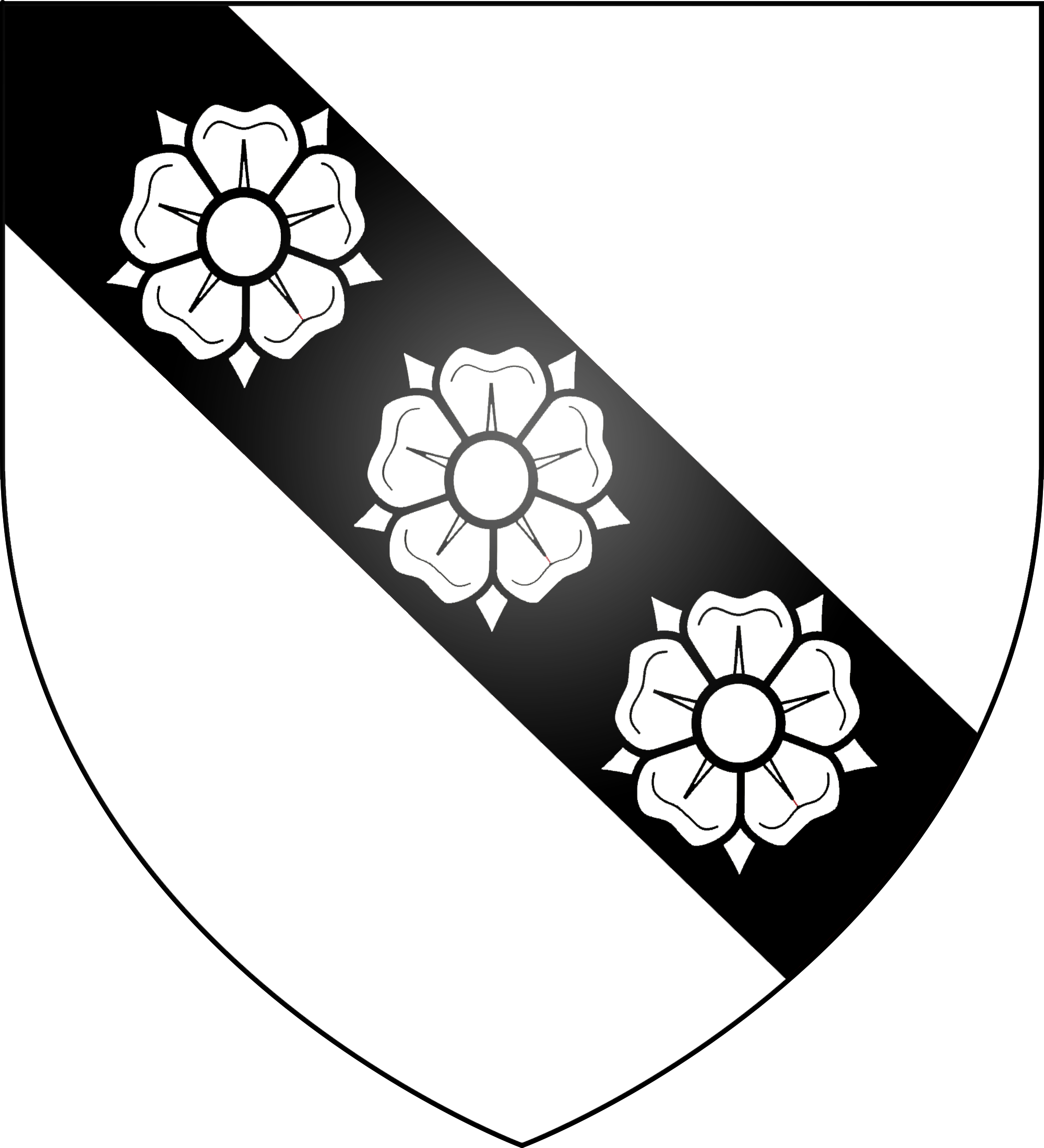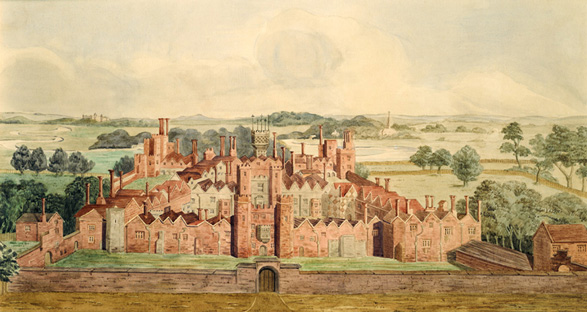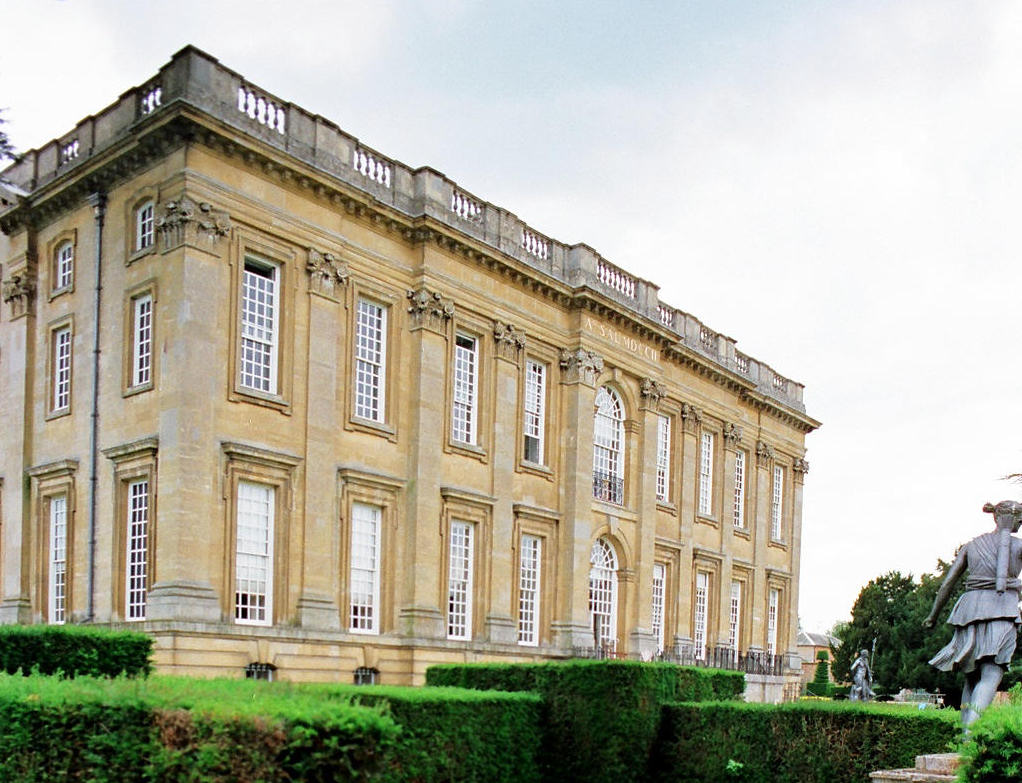|
Elizabeth Trevannion
Elizabeth Trevannion, Countess of Monmouth (died 1641), was an English aristocrat and keeper of Prince Charles. Elizabeth Trevannion or Trevanion was a daughter of Hugh Trevannion of St Michael Caerhays and Sybilla Morgan of Lockstowe or Arkestone, Herefordshire. Their home was Caerhays Castle. Career She married Robert Carey on 20 Aug 1593. They were first cousins, Robert's mother Anne Carey was the elder sister of Sybilla Morgan. After the Union of Crowns in 1603, Prince Charles remained in Scotland at Dunfermline Palace in the keeping of Alexander Seton. Elizabeth Carey was sworn in as a lady in waiting of the privy chamber and Mistress of her Majesty's Sweet Coffers to Anne of Denmark, in charge of perfuming the queen's wardrobe. The occasion, at Windsor Castle, was probably 2 July 1603, when the "great ladies" paid homage to Anne of Denmark in turn, "most sumptuous in apparel, and exceeding rich and glorious in jewels". This event was held in parallel with the installa ... [...More Info...] [...Related Items...] OR: [Wikipedia] [Google] [Baidu] |
John Erskine, Earl Of Mar (1558–1634)
John Erskine, Earl of Mar (c. 155814 December 1634)''Oxford Dictionary of National Biography Online (ODNB)'', "John Erskine, eighteenth or second earl of Mar," by Julian Goodare. was a Scottish politician, the only son of another John Erskine and Annabella Murray. He is regarded as both the 19th earl (in the 1st creation) and the 2nd earl (in the 7th). History John Erskine was born in 1558, though the precise date is unknown. Together with King James VI of Scotland he was educated by George Buchanan. He succeeded to the earldom of Mar on the death of his father in 1572. After attaining his majority he was nominally the guardian of the young king, who was about seven years his junior, and who lived with him at Stirling; but he was in reality something of a puppet in the hands of the regent, James Douglas, 4th Earl of Morton; and he lost power and position when Morton was imprisoned. He married his first wife, Anne Drummond (15551587) in October 1580. Anne was the daughter of ... [...More Info...] [...Related Items...] OR: [Wikipedia] [Google] [Baidu] |
Watford
Watford () is a town and borough in Hertfordshire, England, 15 miles northwest of Central London, on the River Colne. Initially a small market town, the Grand Junction Canal encouraged the construction of paper-making mills, print works, and breweries. While industry has declined in Watford, its location near London and transport links has attracted several companies to site their headquarters in the town. Cassiobury Park is a public park that was once the manor estate of the Earls of Essex. The town developed next to the River Colne on land belonging to St Albans Abbey. In the 12th century, a charter was granted allowing a market, and the building of St Mary's Church began. The town grew partly due to travellers going to Berkhamsted Castle and the royal palace at Kings Langley. A mansion was built at Cassiobury in the 16th century. This was partly rebuilt in the 17th century and another country house was built at The Grove. The Grand Junction Canal in 1798 and th ... [...More Info...] [...Related Items...] OR: [Wikipedia] [Google] [Baidu] |
Moor Park (house)
Moor Park is a Neo-Palladian mansion set within several hundred acres of parkland to the south-east of Rickmansworth in Hertfordshire, England. It is called Moor Park Mansion because it is in the old park of the Manor of More. It now serves as the clubhouse of Moor Park Golf Club. The house is listed Grade I on the National Heritage List for England, and the landscaped park is listed Grade II* on the Register of Historic Parks and Gardens. History After The More became a ruin, in about 1617 the 3rd Earl of Bedford built a new house on the hill to the southwest of the old palace, within the deer park. The house was rebuilt in 1678–1679 for James Scott, 1st Duke of Monmouth, and inherited by his wife, Anne Scott, 1st Duchess of Buccleuch, after he was beheaded. She sold it to Benjamin Haskins-Stiles, who had made a fortune in the South Sea Company before the notorious bubble burst; the current appearance of the mansion can be traced to him. Styles had the house remode ... [...More Info...] [...Related Items...] OR: [Wikipedia] [Google] [Baidu] |
Earl Of Monmouth
Earl of Monmouth was a title that was created twice in the Peerage of England. The title was first created for English courtier Robert Carey, 1st Baron Carey in 1626. He had already been created Baron Carey, of Leppington, in 1622, also in the Peerage of England. The titles became extinct upon the death of his son, the second Earl, who died without surviving male issue in 1661. The second creation, in 1689, was for the great-grandson of the first Earl of the first creation, Charles Mordaunt, 2nd Viscount Mordaunt. In 1697 he succeeded his uncle as Earl of Peterborough. See the latter title for more information. In 1701, Charles Middleton, previously 2nd Earl of Middleton was awarded the Jacobite peerages of Earl of Monmouth and Viscount Clermont in the Peerage of England. Earls of Monmouth; First creation (1626) *Robert Carey, 1st Earl of Monmouth (1560–1639) *Henry Carey, 2nd Earl of Monmouth (1596–1661) Earls of Monmouth; Second creation (1689) *see Earl of Peterboroug ... [...More Info...] [...Related Items...] OR: [Wikipedia] [Google] [Baidu] |
John Harington, 1st Baron Harington Of Exton
John Harington, 1st Baron Harington (1539/40 – 23 August 1613) of Exton in Rutland, was an English courtier and politician. Family He was the eldest son and heir of Sir James Harington (c. 1511–1592) of Exton, by his wife Lucy Sidney (c. 1520 – c. 1591), daughter of Sir William Sidney by his wife Anne Pagenham. His family was said to have held 'the most extensive estates in Rutland during the late sixteenth century'. Career He entered the Inner Temple in 1558, and was elected a Member of Parliament for Rutland in 1571. He was a Commissioner of the Peace for Kesteven from about 1559 to 1593, and was a servant to Robert Dudley, 1st Earl of Leicester in the Netherlands in 1585 and was Keeper of Kenilworth Castle, Warwickshire (1588–1590) for Ambrose Dudley, 3rd Earl of Warwick. He was appointed Sheriff of Warwickshire for 1582 and was knighted in 1584 by Sir Henry Sidney at Sir Thomas Henneage's house in London. Harington was a Knight of the Shire (MP) for Warwickshire ... [...More Info...] [...Related Items...] OR: [Wikipedia] [Google] [Baidu] |
Coombe Abbey
Coombe Abbey is a hotel which has been developed from a historic grade I listed building and former country house. It is located at Combe Fields in the Borough of Rugby, roughly midway between Coventry and Brinklow in the countryside of Warwickshire, England. The house's original grounds are now a country park known as Coombe Country Park and run by Coventry City Council. Early history as an abbey During the 12th century, the building was known as the Abbey of Cumbe, and was the largest and most influential monastery in Warwickshire. The land was given to the Cistercian monks by Richard de Camville, of Didleton Castle. They accepted the gift, and sent out an advance party of monks, who, living in temporary wooden buildings, began the building of a monastery dedicated to the Blessed Virgin. Among these monks was one called Martin who was to be the first Abbot of the new House which opened in 1150. Numerous gifts of land were made to the monks during the four hundred years of t ... [...More Info...] [...Related Items...] OR: [Wikipedia] [Google] [Baidu] |
Elizabeth Stuart, Queen Of Bohemia
Elizabeth Stuart (19 August 159613 February 1662) was Electress of the Palatinate and briefly Queen of Bohemia as the wife of Frederick V of the Palatinate. Since her husband's reign in Bohemia lasted for just one winter, she is called the Winter Queen. Elizabeth was the second child and eldest daughter of James VI and I, King of Scotland, England, and Ireland, and his wife, Anne of Denmark. With the demise of Anne, Queen of Great Britain, the last Stuart monarch in 1714, Elizabeth's grandson by her daughter Sophia of Hanover succeeded to the British throne as George I, initiating the House of Hanover. Early life Elizabeth was born at Dunfermline Palace, Fife, on 19 August 1596 at 2 o'clock in the morning. M. Barbieri, ''Descriptive and Historical Gazetteer of the Counties of Fife, Kinross, and Clackmannan'' (1857)p. 157 “ELIZABETH STUART.-Calderwood, after referring to a tumult in Edinburgh, says, that shortly before these events, the Queen (of James VI.) was deliver ... [...More Info...] [...Related Items...] OR: [Wikipedia] [Google] [Baidu] |
Mary Anne Everett Green
Mary Anne Everett Green ( Wood; 19 July 1818 – 1 November 1895) was an English historian. After establishing a reputation for scholarship with two multi-volume books on royal ladies and noblewomen, she was invited to assist in preparing calendars (abstracts) of hitherto disorganised historical state papers. In this role of "calendars editor", she participated in the mid-19th-century initiative to establish a centralised national archive. She was one of the most respected female historians in Victorian Britain. Family and early career Mary Anne Everett Wood was born in Sheffield to a Wesleyan Methodist minister, Robert Wood, and his wife Sarah ( Bateson; born Wortley, Leeds, youngest daughter of Matthew Bateson, clothier). Her father was responsible for her education, offering an extensive knowledge of history and languages, and she benefited from mixing with her parents' intellectual friends including James Everett, the minister and writer, for whom she was named. When th ... [...More Info...] [...Related Items...] OR: [Wikipedia] [Google] [Baidu] |
Duke Of York
Duke of York is a title of nobility in the Peerage of the United Kingdom. Since the 15th century, it has, when granted, usually been given to the second son of English (later British) monarchs. The equivalent title in the Scottish peerage was Duke of Albany. However, King George II and King George III granted the titles ''Duke of York and Albany''. Initially granted in the 14th century in the Peerage of England, the title ''Duke of York'' has been created eight times. The title ''Duke of York and Albany'' has been created three times. These occurred during the 18th century, following the 1707 unification of the Kingdom of England and Kingdom of Scotland into a single, united realm. The double naming was done so that a territorial designation from each of the previously separate realms could be included. The current Duke of York is Prince Andrew, the younger brother of Charles III. The present Duke's marriage produced two daughters, and he has remained unmarried since his 19 ... [...More Info...] [...Related Items...] OR: [Wikipedia] [Google] [Baidu] |
Oatlands Palace
Oatlands Palace is a former Tudor and Stuart royal palace which took the place of the former manor of the village of Oatlands near Weybridge, Surrey. Little remains of the original building, so excavations of the palace took place in 1964 to rediscover its extent. Palace Much of the foundation stone for the palace came from Chertsey Abbey which fell into ruins after the Dissolution of the Monasteries. Henry VIII came to Oatlands on a progress in September 1514 and hunted stags on Chertsey Meads. He acquired the house in 1538, and rebuilt it for Anne of Cleves. The palace was built around three main adjoining quadrangular courtyards covering fourteen hectares and utilising an existing 15th-century moated manor house. A bed made for Anne of Cleves was described in an inventory of Oatlands. "Quene Annes bedd" had curtains of crimson cloth of gold and cloth of silver decorated with borders of purple velvet on the seams. It featured 108 embroidered badges of Anne and Henry a ... [...More Info...] [...Related Items...] OR: [Wikipedia] [Google] [Baidu] |
Easton Neston House
Easton Neston is a large grade I listed country house in the parish of Easton Neston near Towcester in Northamptonshire, England. It was built by William Fermor, 1st Baron Leominster (1648–1711), in the Baroque style to the design of the architect Nicholas Hawksmoor. Easton Neston is thought to be the only mansion which was solely the work of Hawksmoor. From about 1700, after the completion of Easton Neston, Hawksmoor worked with Sir John Vanbrugh on many buildings, including Castle Howard and Blenheim Palace, and often provided technical knowledge to the less qualified Vanbrugh. Hawksmoor's work was always more classically severe than Vanbrugh's. However, Easton Neston predates this partnership by some six years. Architect Hawksmoor was commissioned to re-build the old manor house at Easton Neston by Sir William Fermor, later created Baron Leominster, who had inherited the estate from his father Sir William Fermor, 1st Baronet (1621–1661), who had himself inherited it in 1 ... [...More Info...] [...Related Items...] OR: [Wikipedia] [Google] [Baidu] |




.jpg)



